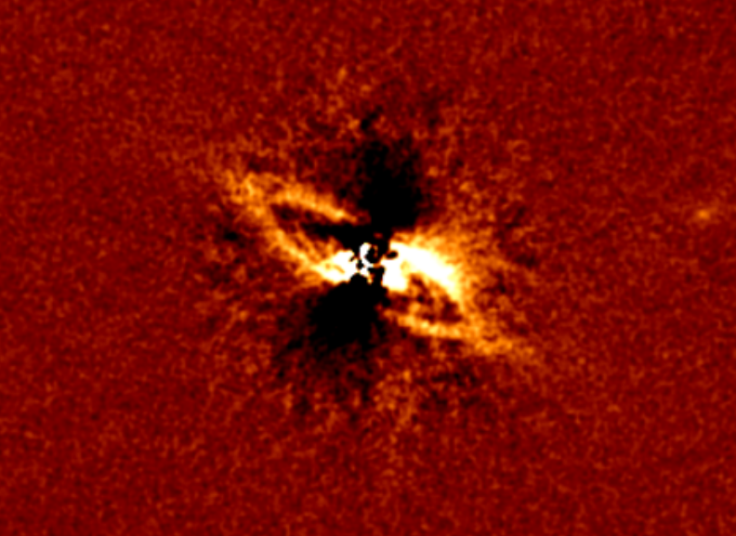Astronomers Detect Concentric Rings — Possible Sign Of Orbiting Protoplanets — In The Circumstellar Disk Of A Nearby Star

Over the years, astronomers have discovered and confirmed the existence of nearly 3,000 exoplanets, but there is one question that they still haven’t been able to answer satisfactorily — how exactly do planets form? Specifically, how do dust particles just a few micrometers in size aggregate to form gigantic planets thousands of miles in diameter?
In their quest to understand the formation of planets — an effort NASA once likened to “trying to learn how people grow from babies to children to teenagers, by only studying adults” — astronomers are constantly on the lookout for young stars surrounded by a circumstellar disk, which, given time, can evolve into protoplanetary disks.
An international team of researchers has now discovered a young star whose circumstellar disk shows signs of being perturbed by planetary bodies. The discovery of the disk around the 15-million-year old star, named HIP73145, was made using the European Southern Observatory’s Spectro-Polarimetric High-contrast Exoplanet REsearch (SPHERE) instrument.
“We detect a series of concentric rings in the disk around HIP 73145. This is one of the rare cases where multiple components are necessary to fit the SED [Spectral Energy Distribution] and are also detected in scattered light. The presence of such ring structures somewhat questions the nature of the object as a pure debris disk,” the researchers wrote in a study now available online on the preprint server arXiv.
The outermost disk is estimated to have a radius of roughly 96 Astronomical Units (1 AU = 93 million miles). The second ring is located at a distance of approximately 66 AU from the star, and there are signs that two more rings — having radii of 35 AU and 45 AU, respectively — are also present.
“Such structures in circumstellar disks have been seen around numerous young stars and have sparked a remarkable debate, offering a large set of possible explanations,” the authors of the study wrote. “Most require a substantial amount of dust, the presence of which in the HIP 73145 disk is not firmly established to date.”
One possible explanation is protoplanets, although it’s too soon to confirm whether any such bodies exist in the orbit around HIP73145.
“Whether the substructures in the HIP 73145 disk are caused by dynamical interactions with planets or by dust-gas interactions cannot be clarified in this paper,” the researchers concluded.
© Copyright IBTimes 2025. All rights reserved.





















